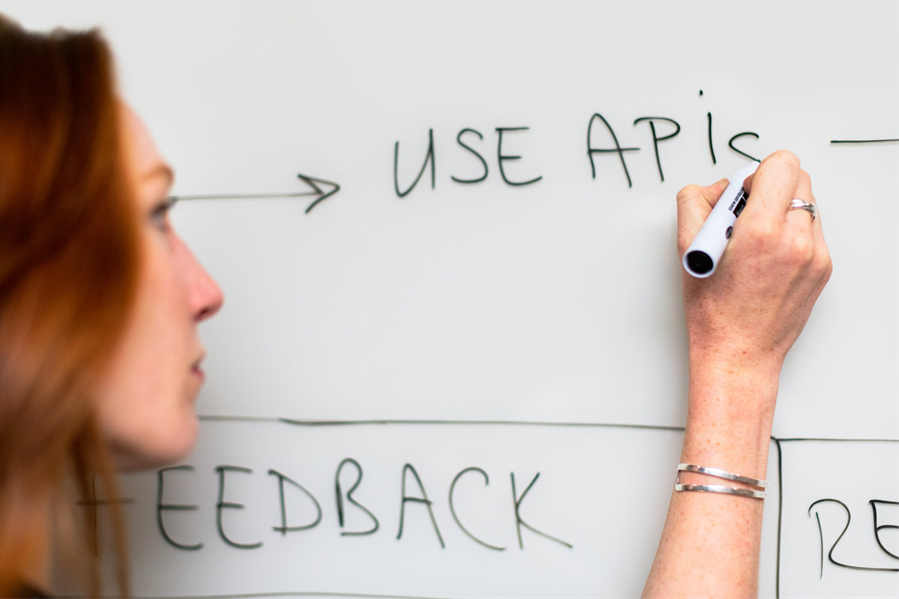Understanding The PI System
Connections are everything in the digital business world, but when most people think of connections, they think of person to person networking.
While person to person connections are critical in the business world, there are other types of connections that are equally important. APIs, or application programming interfaces, are one type of connection that is instrumental for online businesses. APIs easily bring services or features to existing programs, which bolsters a business’s offerings without as much of a headache. Whether your company uses APIs to offer new features like share buttons and directional maps, or data collection, there is no disputing the varied usefulness and power of APIs. Using single APIs or using multiple features contained within one API is perfectly fine for many companies, but you can extract more value from APIs with an API system. Implementing a more robust API system, such as the PI system, or strategy can improve your return on investment and your overall business. Understanding and correctly using APIs or an API system is easier said than done. Coming to grips with APIs will require digesting some technical language, but adding and using APIs is less complicated than you might imagine. Thankfully, the process is becoming more accessible, so with a bit of research, a business of any size can successfully utilize APIs.
Common Uses For APIs
Most websites you visit everyday use APIs, and larger websites likely use a multitude of different APIs. APIs are so widespread and universally adopted that customers and users have come to expect the features common APIs offer. Share buttons for various social media platforms are commonplace at the bottom of web pages; each social media platform supplies its own API that businesses can use to integrate social media features. Another common API implementation most people will have seen at some point is in-page directions or a map. The Google Maps API collection offers a variety of APIs, each designed for specific uses. Google Maps offers so many different APIs, and Google has included an API picker to help you narrow down which option is best for your needs. There are a plethora of common uses for APIs, and chances are if you want to bring a feature to your website, there is an API that can help you.
Many APIs are free to use and open to businesses of any size but double-check with each API provider to ensure you are using the program correctly. Public APIs offer access to their data to encourage developers to use their platform instead of the competition. The World Bank API is an example of a research API that gives users data about countries around the world with the goal of that data being used for innovation. The Internet is continuously evolving, so an API you used last year might not exist anymore. Instagram famously shut down its public API in 2018, and third-party apps must now ask for permission and receive approval before they can access the now private API. Making an Instagram business account will help you access the API so you can continue using other systems like Hootsuite.
A Family of Connections Create Better Data
The PI system is multi-faceted with every capability a business could ever need, and each sub-product within the PI system is designed for a specific task. PI connectors are responsible for establishing the connection with a new data source, collecting data, and storing the data on data servers that then sends the data to the next program in line. PI servers are scalable, which means you can collect and store up to 20 million data streams. Even before the system starts formal analysis, the incoming raw data is tagged with operational context and organized for easier searching. The data is then managed by the PI Client Tools, where analysis and visualization occur. From automated reports and analysis to easy-to-make data graphics, the tools are there to manage your data easily.
Data and connections play a critical role in business. APIs and shipping APIs can bring new features to your site and help you access new data. Once you have data streaming in, you need a system to manage it. The PI system takes care of every step from the initial connection and collection through analysis. Understanding the PI system will take time, but once you are comfortable, you can extract even more value from your collected data.
Related Posts
AI has been around for a while and the automation of numerous business processes and systems has arguably been the precursor of the current debate and the basis for practical development of AI.
There is so much information out there to help people struggling with too much clutter in their homes, but not nearly as much about digital clutter.
Confused about the difference between a desktop app and a web app? Look no further! This guide outlines the advantages and disadvantages of both.
Nowadays, as the logistics industry is evolving rapidly, technological support is crucial for its growth.
In today's fast-paced, ever-changing business world, companies are under constant pressure to release new software features and updates at an unprecedented pace.


















Comments
comments powered by Disqus